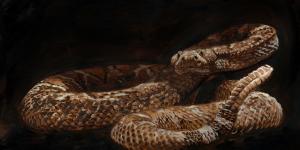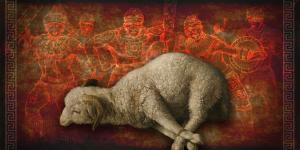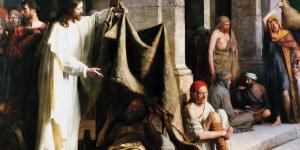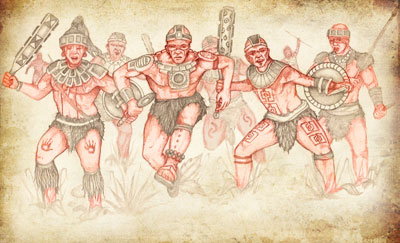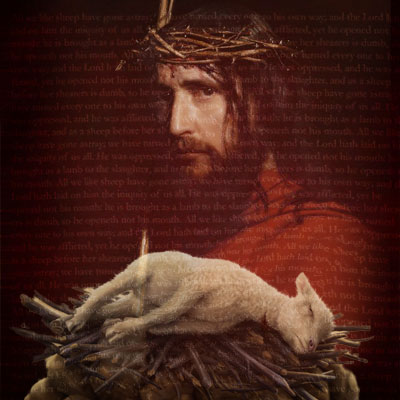You are here
Book of Mormon Central is in the process of migrating to our new Scripture Central website.
We ask for your patience during this transition. Over the coming weeks, all pages of bookofmormoncentral.org will be redirected to their corresponding page on scripturecentral.org, resulting in minimal disruption.

Scripture Block
3 Nephi 1-7
To help class members understand the need to endure faithfully in times of trial and temptation.
Lesson Manual
KnoWhys

How was There a Night Without Darkness?
3 Nephi 1:15
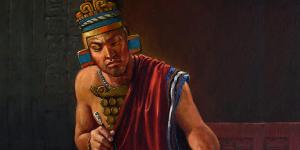
Why was Giddianhi So Polite?
3 Nephi 3:2
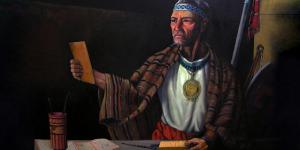
Why Did Mormon Introduce Himself in 3 Nephi 5?
3 Nephi 5:12
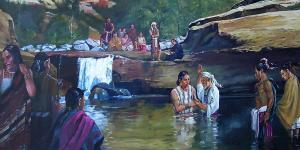
How Was Nephi, Son of Nephi, Similar to John the Baptist?
3 Nephi 7:23-24
Articles
Sidney B. Sperry, "What the Book of Mormon Is (Concluded)," Journal of Book of Mormon Studies 4, no. 1 (1995): 28-40.
An analysis of the text of 3 Nephi to Moroni. Third Nephi was written by Nephi, the son of Nephi, the son of Helaman. Fourth Nephi in turn was written by the son of Nephi3 also called Nephi, and Nephi4‘s son Amos and grandsons Amos and his brother Ammaron. The book of Mormon was principally inscribed by Mormon and Moroni. The book of Ether exposes the terrible end of a people persisting in wickedness. The book of Moroni shows his love for his enemies.
John W. Welch, "Seeing Third Nephi as the Holy of Holies of the Book of Mormon," Journal of Book of Mormon Studies 19, no. 1 (2010): 36-55.
Third Nephi and its account of the ministry of the resurrected Jesus to the Nephites has long been seen as the pinnacle of the Book of Mormon. This text can also be viewed as the Holy of Holies of the Book of Mormon. Everything in 3 Nephi, especially the ministry of the Savior, echoes themes related to the temple and the presence of the Lord in the Holy of Holies. Themes such as silence, timelessness, unity, awe, and consecration confirm this interpretation.
3 Nephi 1
Jeffrey R. Chadwick, "Dating the Death of Jesus Christ," BYU Studies Quarterly 54, no. 4 (2016): 135-191.
This article puts forth arguments to determine the dating of Jesus Christ's birth, in response to a BYU Studies article from 2010.
Eleanor Colton, "Virgin Birth," in Encyclopedia of Mormonism, edited by Daniel H. Ludlow, Vol. 4 (New York: Macmillan, 1992)
An encyclopedia entry on Mary as the mother of Jesus Christ, who was a virgin at the time of Christ's birth.
3 Nephi 2:15
Brant Gardner, "If Lamanites were black, why didn't anyone notice?" FAIRMormon Blog (May 21, 2012).
Brant Gardner argues that when speaking of the Lamanites' "skin of blackness," it may not be referring to skin pigmentation. While the text speaks of the "mark" and the "skin of blackness" set upon the Lamanites, the way they behave in the text seems to indicate that it may not be referring to their actual skin color.
3 Nephi 3
"Lachoneus," Book of Mormon Onomasticon.
The etymology for the name "Lachoneus."
"Giddianhi," Book of Mormon Onomasticon.
The etymology for the name "Giddianhi."
"Gidgiddoni," Book of Mormon Onomasticon.
The etymology for the name "Gidgiddoni."
John W. Welch and Kelly Ward, "Thieves and Robbers," in Reexploring the Book of Mormon, edited by John W. Welch (Provo, UT: FARMS, 1992), 248-249.
While a common thief is one who commits petty theft, in the ancient world, a "robber" had a more sinister role. Robbers often indicated that they were outsiders, highway men, brigands, and participated in secret oaths.
3 Nephi 4
"Zemnarihah," Book of Mormon Onomasticon.
The etymology for the name "Zemnarihah."
Matthew Brown, "Girded About with a Lambskin" Journal of Book of Mormon Studies 6 no. 2 (1997): 124-151.
The publication of the Book of Mormon brought forward the first of many comparisons between the restorational work of the Prophet Joseph Smith and his surrounding environment, including Freemasonry. One point of comparison has been the lambskin apparel mentioned in 3 Nephi 4:7. I will suggest a possible connection between this item of apparel and ritual clothing that was worn in ancient Israel, Egypt, and Mesoamerica. I will also suggest a possible reason for the use of this item of clothing among the secret combinations in the Book of Mormon. Finally, I will discuss the lambskin apron used in Freemasonic ritual.
John W. Welch, "The Execution of Zemnarihah," in Reexploring the Book of Mormon, edited by John W. Welch (Provo, UT: FARMS, 1992), 250-252.
This article explains why Zemnarihah would have been hanged as his execution. In Israelite law, the ultimate punishment was hanging upon a tree because it was believed that someone hanged on a tree was cursed of God.
John A. Tvedtnes, "More on the Hanging of Zemnarihah," in Pressing Forward with the Book of Mormon: The FARMS Updates of the 1990s, edited by John W. Welch and Melvin J. Thorne (Provo, UT: FARMS, 1999), 208-210.
This article provides an interesting note for further reasoning why Zemnarihah was hanged on a tree. The Temple Scroll indicates that hanging would be the punishment of spies. Since Zemnarihah was part of the band of Gadianton, perhaps he was classified as a spy or insurrectionist.
3 Nephi 6:14
John A. Tvedtnes and Kevin L. Barney, "Word Groups in the Book of Mormon," in Pressing Forward with the Book of Mormon: The FARMS Updates of the 1990s, edited by John W. Welch and Melvin J. Thorne (Provo, UT: FARMS, 1999), 211-218.
3 Nephi 6:14 uses the groups of words "firm, steadfast, and immovable." While it may seem commonplace to list adjectives together, Tvedtnes and Barney discuss how these word groups and word pairs formed a large part of Biblical rhetoric, and how they play into the Book of Mormon.
3 Nephi 7
Halverson, Taylor. "3 Nephi 7: A Reflection Upon Human Unrighteousness." Interpreter Resources for Students and Teachers. October 9, 2016.
Matthew Roper, "Possible Book of Mormon Parallel," Insights 20, no. 10 (2000).
An interesting phenomenon occurred in Spanish America, when 3 suns were witnessed in the sky, providing a possible parallel to the sign of Christ's birth.
Additional Lesson Guides
LDS Living Gospel Doctrine Lesson #36
RSC Gospel Doctrine Lesson Resources #36
Meridian Magazine Gospel Doctrine Lesson #36
GospelDoctrine.com 3 Nephi 1, 3 Nephi 2, 3 Nephi 4, 3 Nephi 5, 3 Nephi 6, 3 Nephi 7
Feast Upon the Word Gospel Doctrine Lesson #36

